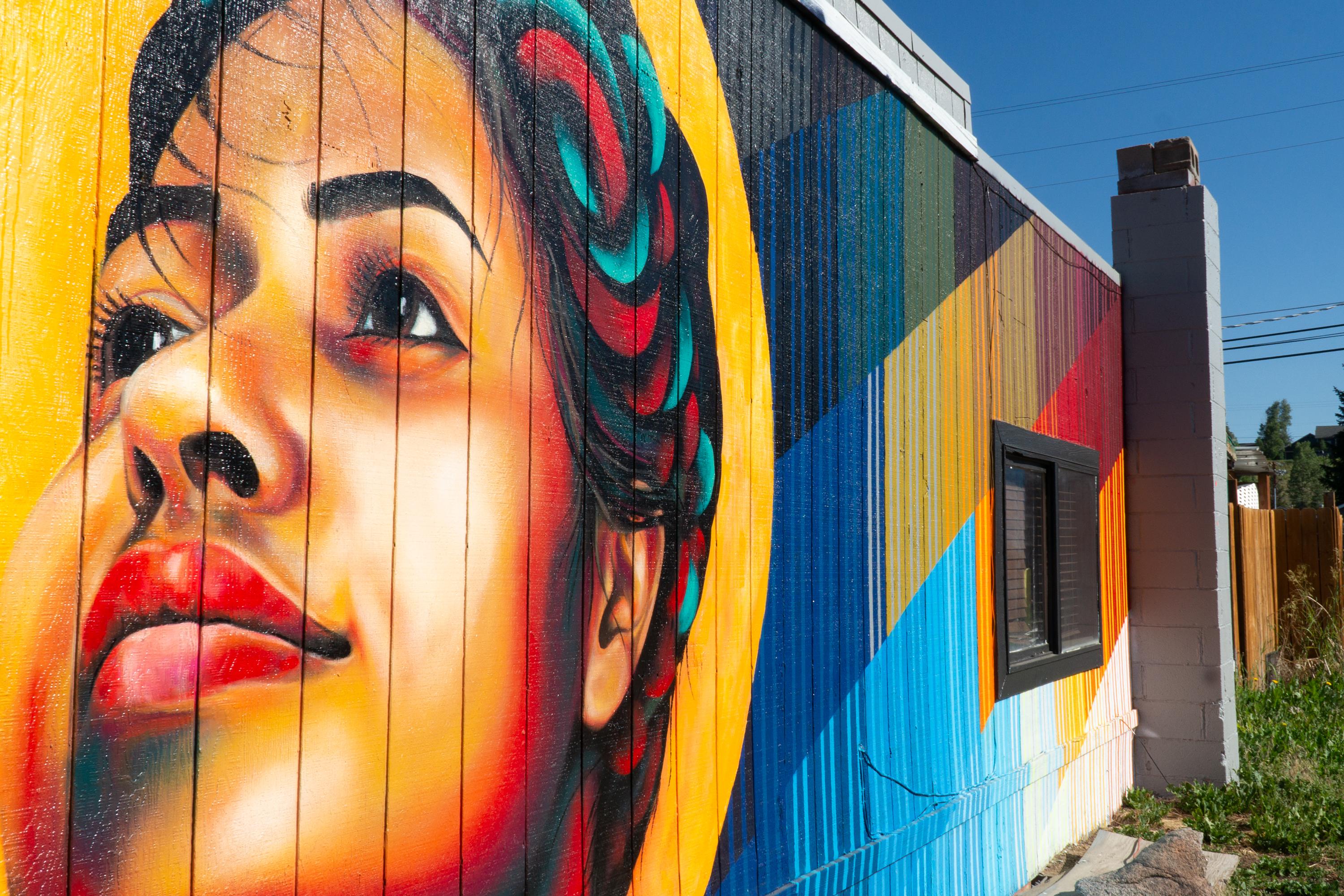
Public art can elicit strong emotions.
Duragoans remember “Arc of History,” the contentious public piece mounted at a busy intersection that eventually met its demise at the hands of vandals. Though its approval ratings saw a slight bump after some teens snuck an artful dino head onto it.
Breckenridge’s trail troll was rehomed after its original location gave neighbors some headaches. And there continues to be discussion around some of Denver metro’s most iconic pieces, including Luis Jiménez’s “Blue Mustang” at Denver International Airport (aka Blucifer) and John McEnroe’s red, lumpy obelisk known as “National Velvet.”
More recently, there were the murals in Granby.
The RKY MTN WALLS festival in June highlighted the artwork of more than a dozen muralists, many from Denver, along the main stretch of town. It sparked a debate about what kind of art should go up and who gets to choose it. Mayor Paul Chavoustie penned an op-ed in the local paper, writing that it's time for Granby, for the first time in the town’s history, to adopt a policy on public art.
The town plans to establish a public art committee and the Board of Trustees will select the seven members at its Sept. 10 meeting.
Mayor Chavoustie told CPR News he sees this as a first step in building a collection of public art that Granby can be known for. It’s also part of a downtown renewal.
“Part of an interesting downtown is to have artwork and to have places to go and look and pause and spend time with it,” he said.
Granby is one of the latest Colorado communities to lean in on public art. Other places exploring where art fits into the public sector include Windsor, Severance, Superior and Craig.
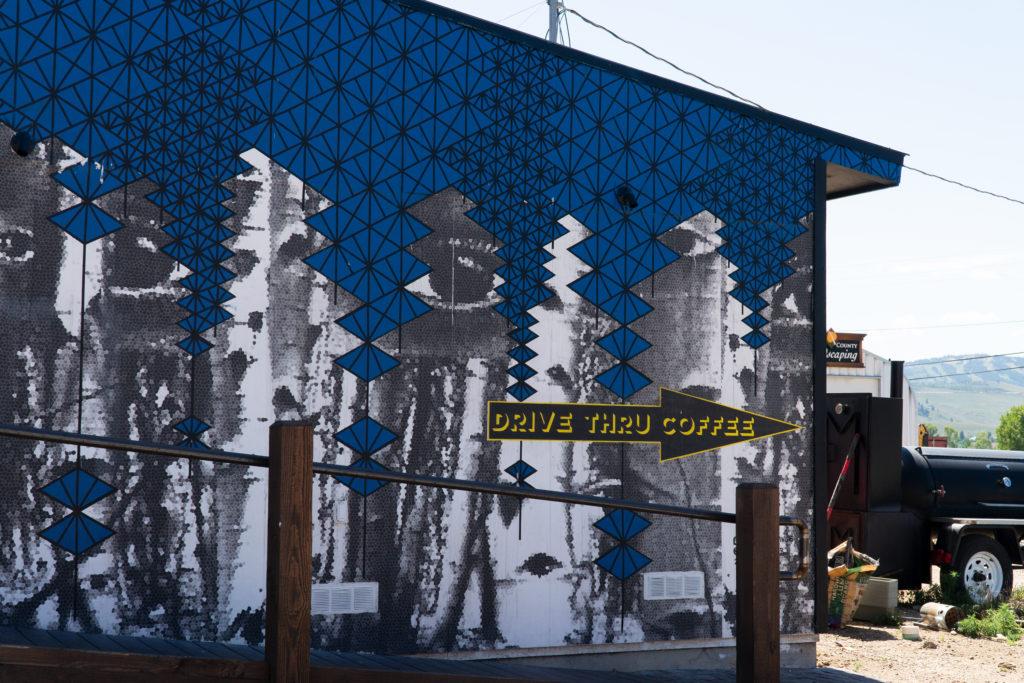
Not A Crest, But A Rising Tide
Roughly seven percent of Colorado’s more than 270 towns and cities have public art programs, according to the latest list compiled by Colorado Creative Industries. CCI staff said the list includes only programs the agency is aware of, so there very well could be others out there.
Jen Krava, director of programming and new initiatives with Forecast Public Art, a Minnesota-based nonprofit consulting firm, thinks more communities across the country will test the waters with public art because they see “the effects of programs that have been established for awhile.”
A few of the Colorado communities looking at adopting public art policies cite places like Loveland, which launched its program in 1985, as inspiration. Others pointed to Denver, which began in 1988, as well as Grand Junction’s long-running, rotating outdoor sculpture exhibition Art on the Corner, a model that’s inspired public art programs across North America. Basalt, which is expanding its public arts portfolio, has taken note of how places like Carbondale, Breckenridge, Crested Butte and Boulder embrace public art.
There’s also the state-owned collection, established in 1977 by the state legislature.
“I think that more and more cities are in that place now to understand how these programs have affected the cities around the country that have them,” Krava said.
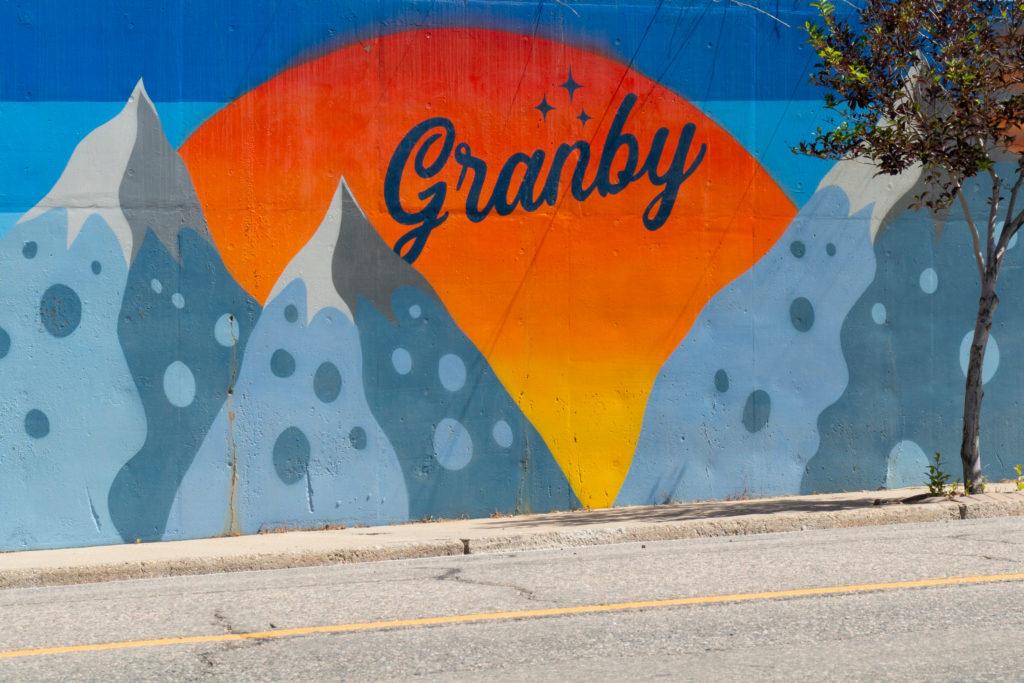
The ‘Public’ In Public Art
For Granby, the mural festival was the first time the town had made a financial investment, to the tune of $5,000, in arts and culture. How much to invest going forward will be on the new public art committee’s to-do list. Chavoustie said there’s not much wiggle room in the town’s budget right now, but he’s hoping for about $10,000.
One thing the mayor is sure about in the wake of the controversy surrounding the murals; he wants more “public input.”
“I would just prefer that residents get to choose what's in their town,” he said. “Just have a good open forum.”
Windsor is also involving the public.
Culture supervisor Laura Browarny said part of what played into the desire for a public art master plan has been the town’s incredible growth.
“With all of this growth, [we] need to be taking into consideration other factors aside from just building houses,” she said. “And we want to create spaces that have art in them that help to build a sense of community and a sense of place here.”
The town invited residents to take a survey earlier in 2019 to ask what kind of art they’d like and where they’d like to see it.
Browarny said they received more than 600 responses and “an overwhelming majority of people were actually in support of having more art around town.”
“The top two choices, which are kind of opposites, were memorial art, so like things to commemorate important people and places,” she said. “And then whimsical art... things that are fun and add visual attention.”
She added that there was also a surprising amount of support for using public funds toward the art. Colorado Springs and Severance also used surveys to bring their residents into the conversation.
Because more public involvement can make the process tricky, Krava advises being flexible.
“I think going into a project without any sort of preconceived notion is one of the biggest and best things that an artist or a city could do,” she said. “Rather focus on the question or the issue that they're trying to investigate or what kinds of opportunities they want to emphasize.”
It can also be tricky because “all good public art is somewhat controversial,” said Kate Jones, executive director at Telluride Arts. “I think we embrace that as the public arts commission, that it's public art, not everyone's supposed to like it all of the time.”
Telluride’s public art program started a few decades ago then went “dormant for awhile after a few pieces were installed.” Then, in 2017, a mural went up on a private building along Main Street.
“[That] sparked the conversation about how do we handle public art in Telluride,” she said.
A public art commission formed in 2018 and developed guidelines for art in the “public right of way” and town-owned property. There’s no public funding attached to the policy at the moment. But Telluride did approve its first sanctioned public art piece — a large grizzly bear sculpture made from thousands of pennies.
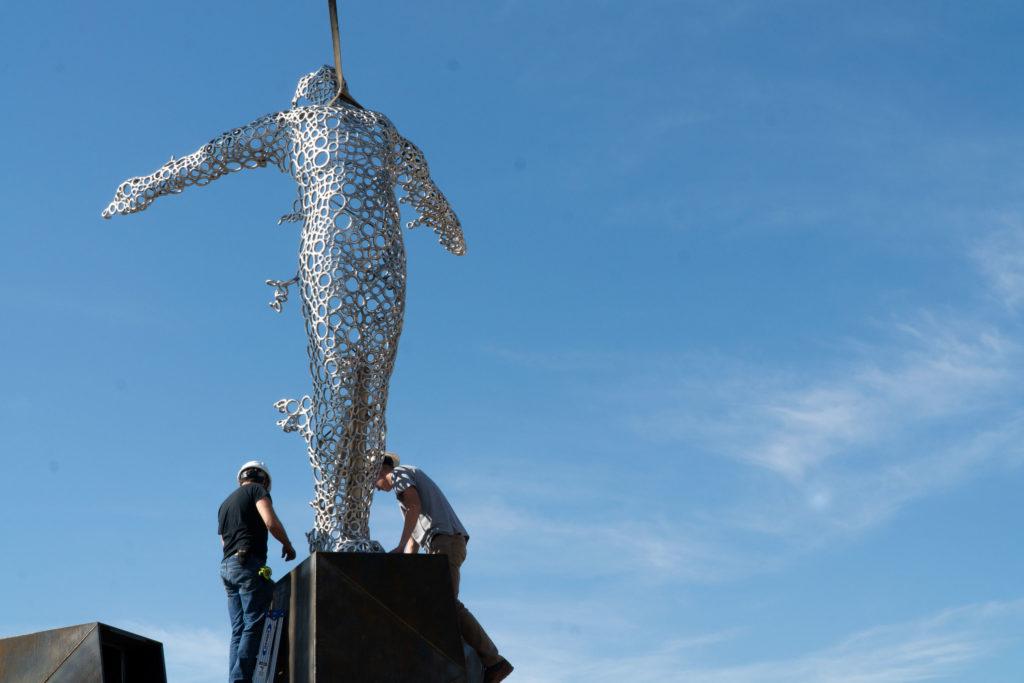
Broadening The Scope Of Public Art
Jennifer Hughes, director of design and creative placemaking at the National Endowment for the Arts, thinks that “public art is having a moment” across the nation. In much of the work the NEA has been funding, Hughes has noticed how communities and artists are rethinking public art programming, “reflecting on its history and future.”
“The creative responses that are coming from the artist community have been really exciting,” she said. “And have been shifting outside… of just the isolated studio practice into the social and civic practice where it really is about this reciprocal relationship with community and place.”
Conversely, cities and towns are “not just seeing the artist as an actor to adorn the public environment and make it aesthetically pleasing, but are really integrated into practice of addressing some of their biggest challenges.”
She named places like Boston and Indianapolis, which are looking at ways to be more equitable with public art placement and utilizing it to highlight and celebrate the cities’ diversity.
A new sculpture erected in the middle of a busy roundabout in the town of Superior — their first town-commissioned piece of art — was designed to “communicate a vision of community.” Three towering abstract figures look windblown as they arch their chests up to the sky with arms extended toward each other.
“To me [community] means harmony, learning to live together and learning to respect our differences,” Kentucky sculptor Douwe Blumberg said. “When they join hands, it becomes a tripod, which is extremely strong. Whereas individually the piece would be less strong.”
Some might consider the $185,000 sculpture a waste money, and Blumberg said he’s often heard that kind of criticism when it comes to public art. But he sees it differently.
“That there are other qualities that are necessary for life — art, music and things like this — are integral to a high quality of life,” he said.
Superior also hired Vancouver firm Happy City to help put together a creative placemaking master plan, which is one example of how communities are expanding the possibilities of public art.
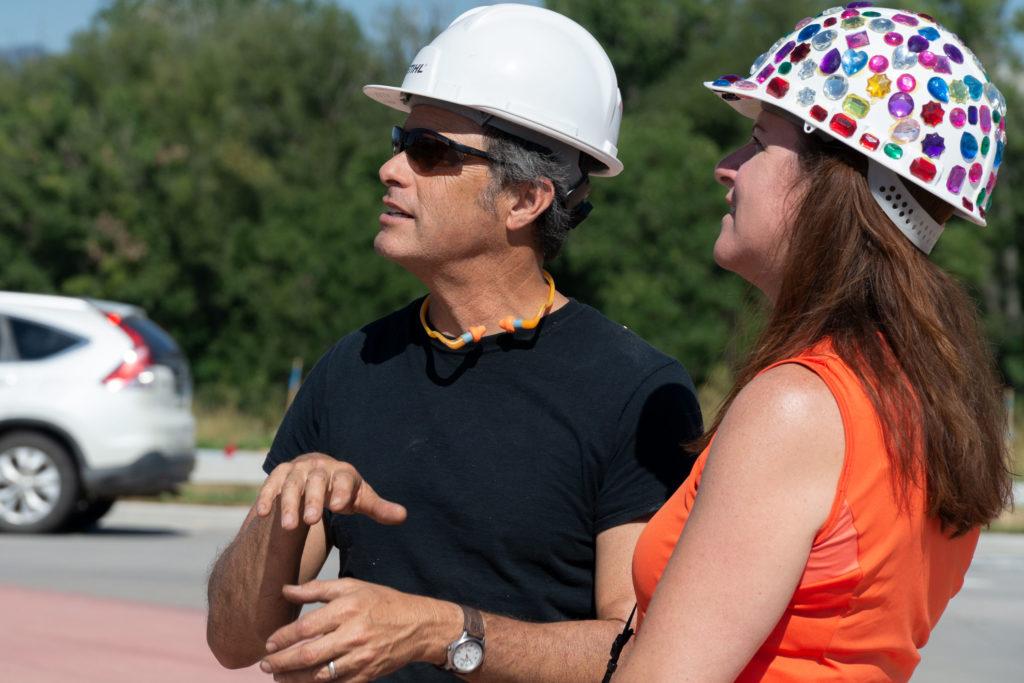
There’s No One-Size-Fits-All Public Art
As communities see what works elsewhere in terms of public art, they’re also learning that one town’s model “can’t just be picked up and placed right on top of our community,” said Jen Krava with Forecast Public Art.
Some communities, like Denver, Loveland and, more recently, Boulder, have a percent-for-art funding model, earmarking a percent of municipal capital construction project budgets, often exceeding a specified amount, for new art.
Colorado Springs has had a public art commission since the early 80s. The bulk of the pieces in the city’s collection have been donated by individuals and organizations.
Though the tides might be changing in Colorado’s second largest city.
The Springs’ new comprehensive master plan, PlanCOS, asks for the city to “complete, update and implement public art plans and to consider arts and culture in other city plans.” Cultural services division manager Matt Mayberry said it will be the first time they’ve had a master planning process for public art.
“This will help guide us for the next decade as we continue to try to embrace and expand public art in the community.”
It’s too early to say whether the new master plan will include funding for public art. But, as part of the public engagement process, the city asks residents, “What should be the funding mechanism moving forward to help grow the program?”
Mayberry said the survey, thus far, seems to show “a lot of pent up energy about art.”
However a community funds it or acquires it, maintenance, while perhaps the less sexy part of public art, is key. Public art often has to withstand the elements, vandalism and people.
Krava said a general rule of thumb is five to 10 percent of a project’s budget going toward a maintenance fund. She also recommends “taking great documentation of pieces,” which helps determining maintenance needs.
“And then there's someone who has to do that, right?” Krava said. “The human power behind all of this is an essential component.”
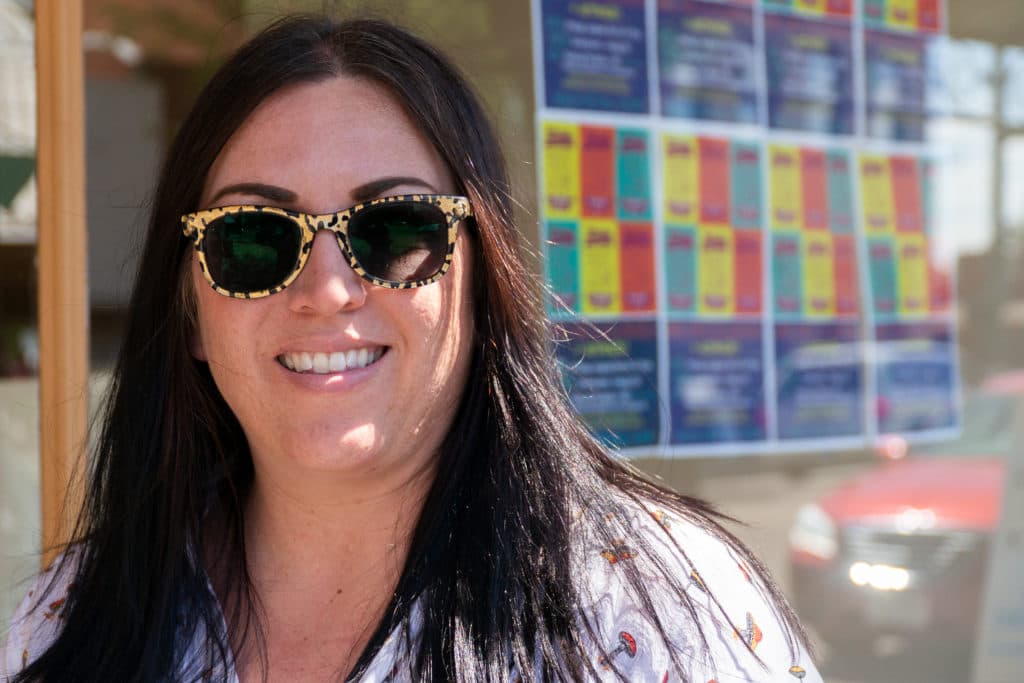
Potential Economic Payoff
For a number of communities, public art has the allure of being a tourism boon, even in the face of, and sometimes because of, controversy. This worked better than anyone had anticipated for the Breckenridge troll.
The Northwest Colorado Arts Council in Craig, which formed about a year and a half ago, is working independently of any government agency right now. Their goal is to “start building an arts and culture focused community,” said president Melanie Kilpatrick, one that could offer an economic alternative to an area needing to diversify after years of reliance on energy and coal.
Kilpatrick embraces the idea of Craig and Moffat County getting its own version of a troll or giant demon horse.
“I think that'll put some attention on our community,” she said. “I do want to be mindful of what our community would like to see from us as artists, but I don't want to limit us as far as what we'd like to put out there on the public arts sector.”
There’s no public art process right now in Craig, so the nonprofit arts council has a ways to go before it makes headlines with artwork. They want to help facilitate that moving forward, but the priority now is an inventory of all of the public art currently in town and Moffat County.
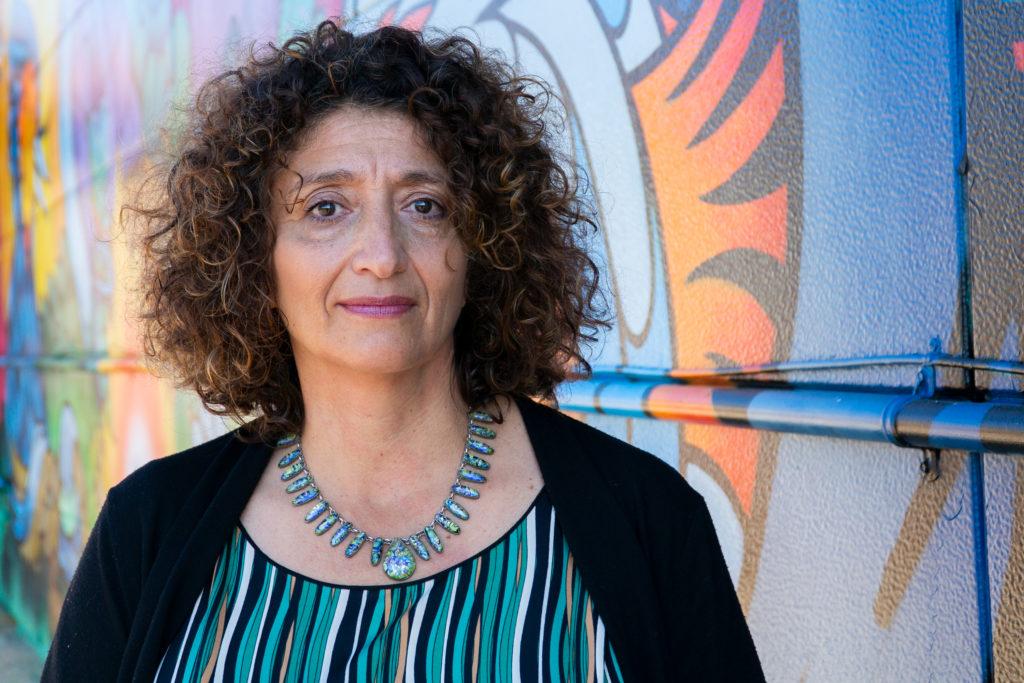
RKY MTN WALLS won’t return to Granby for a second year, according to Jessica Blair, executive director of the Granby Chamber, Main Street and Tourism Office and one of the festival’s organizers — even though the murals have drawn thousands to the mountain town.
Granby resident Tracy Navarrete has one of the murals on the backside of the building that houses her shop Westside 40. She also created the Granby Mural Debate Facebook group to keep things civil as conversations “started exploding” on social media.
“I don't think it's a bad thing,” Navarrete said of the town’s pursuit of a public art policy. “I just think that there's other things that the town could be spending their energy on.”
At the same time, she would welcome Granby becoming known for its art instead of a 2004 event that involved a disgruntled muffler repair shop owner and an armoured bulldozer. Marvin Heemeyer, who reportedly was set off by a dispute with town officials, destroyed more than a dozen buildings along the main stretch of town with what became known as the “Killdozer.”
“That’s really what we’re known for,” Navarrete said. “Part of the excitement ... behind the murals [was] to kind of detour from that incident.”









